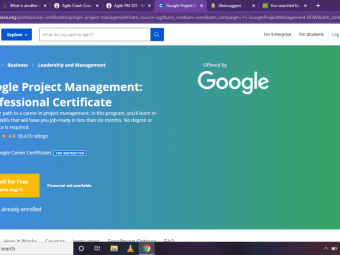Computer Networking Foundations Packet Switching
Learn Packet Switching in IT Networking / Computer Networks, including Character Encoding and basic IP Routing.
Last updated 2022-01-10 | 4.3
- In-dept understanding on Packet Switching and its core concepts- which is important to understand advance topics in IT Networking
- Step-by-step evolution of communications from Telegraphy to Computer Networks and the Internet
- Strong fundamentals on IP Routing
What you'll learn
* Requirements
* Basic knowledge on Computers and Curiosity to learn Computer NetworksDescription
IT Networking or Computer Networks is an exciting field to work, they use Packet Switching for information communication, but have you ever wondered how exactly Computer Networks or IT Networking actually works on Packet Switching ?
This course teaches you outside the conventional 'text book teaching' of one of THE important foundations in IT Networking / Computer Networks, that is Packet Switching. The same underlying technology that runs the Internet and its networks.
IT Networking / Computer Networks is the dominant communication technology in our connected world, their use of Packet Switching replaced the legacy switching technologies like Circuit Switching ( Telephone Networks ) and Message Switching ( Telegraph Networks ), with that move, IT Networking / Computer Networks evolved to a state where they have become an integral part of our lives.
Information travels in the form of IP Packets in Computer Networks, all core concepts of Packet Switching are explained with simple animations and scenarios showing traffic flows in sample Computer Networks. Care has been taken to ensure the concepts can be understood with ease, even students without IT Networking / Computer Networks background can find this course engaging and simple.
Also, you'll be introduced to the information encoding standards, binary systems and briefly to the TCP/IP Model.
Who this course is for:
- Students and Professionals who are curious to learn Computer Networks
- Anyone with career plans in IT Networking / Computer Networks
- Computer Networks Enthusiasts
Course content
4 sections • 11 lectures
Agenda Preview 01:28
You'll find the course curriculum here.
Packet Switching Preview 03:39
A brief introduction and history about Packet Switching.
Message Switching (Telegraph) Preview 07:03
Our early Internet!
A brief look into Telegraph and the Message Switching technology used in it.
Circuit Switching (Telephone) Preview 07:36
Juggernaut of communications world!
Telephone and its once dominant Circuit Switching technology.
Packet Switching - Information Representation Preview 12:29
This lecture explains about how information is represented in a Computer and how that information is communicated in Computer Networks, includes a brief introduction to TCP/IP Model.
TCP/IP Knowledge Check
Just to check your knowledge on TCP/IP Model.
Do not worry if you answer the questions wrong!
Intension of this quiz is not get right answers but to test your intuition.
Packet Switching - Single Connection Preview 10:37
In-depth look into Packet Switching for a case of one-to-one communication.
Packet Switching - Multiple Connections Preview 05:29
In-depth look into Packet Switching for a case of one-to-many communication.
Packet Switching - Packetization Preview 08:20
Important concept of Packet Switching, dividing information / messages / data into Packets.
Packet Switching - Reliability Preview 04:05
Problem of Packets arriving in an incorrect order.
Comparison & Conclusion Preview 09:00
Before conclusion let's have a summary on all the concepts.








 This course includes:
This course includes:













![DevOps Engineer Salary in the US in 2021 [For Fresher’s & Experienced] DevOps Engineer Salary in the US in 2021 [For Fresher’s & Experienced]](https://www.courses-for-you.com/images/uploads/thumbs/11-38.jpeg)


